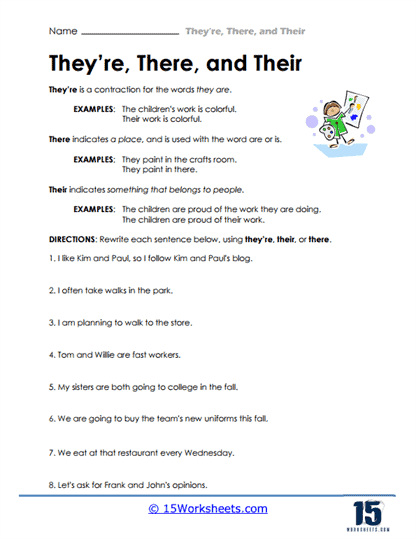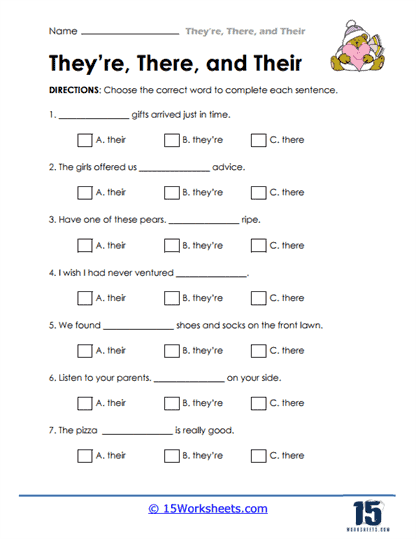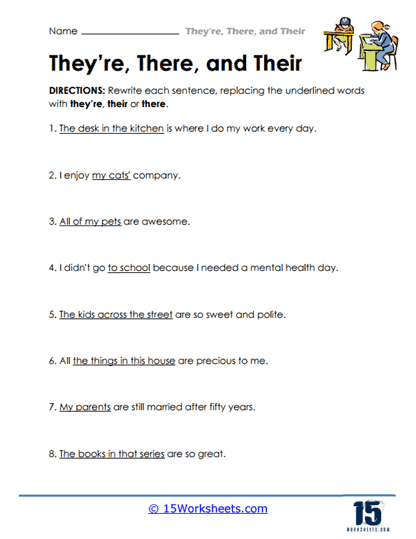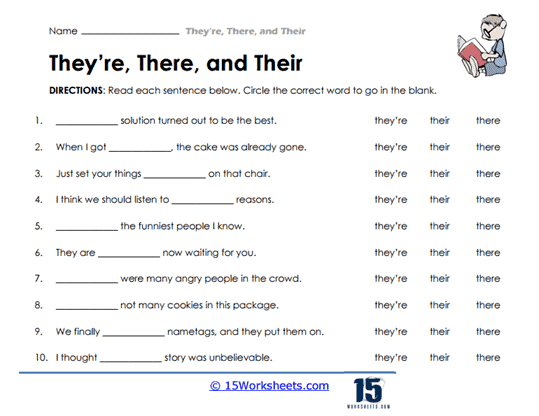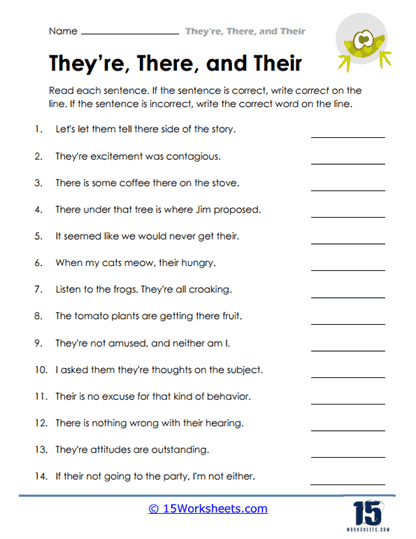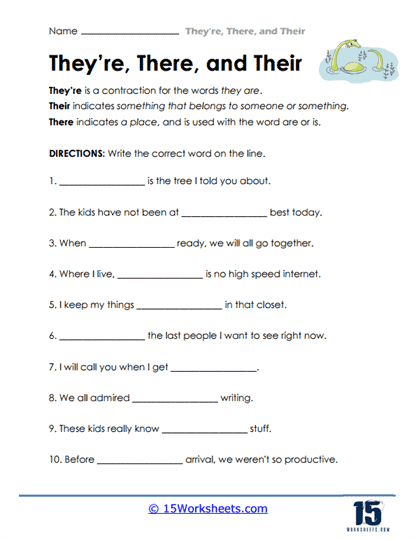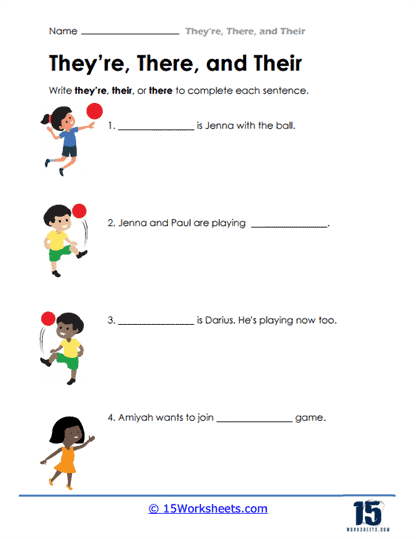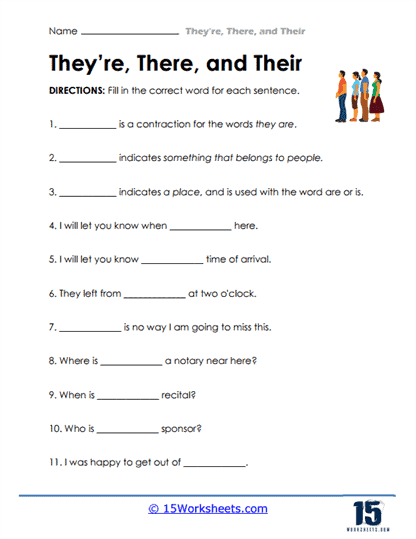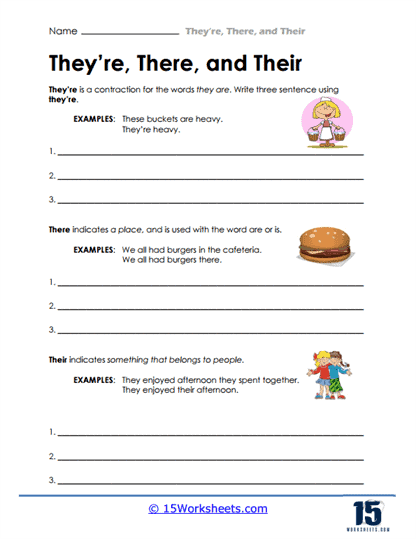They're, There, and Their Worksheets
All About These 15 Worksheets
This collection of They’re, There, and Their worksheets are a great tool for students to differentiate between these three words and understand their proper usage. “They’re” is a contraction of “they are”, while “there” refers to a place or location, and “their” indicates possession or ownership.
These worksheets include a range of exercises and prompts such as fill-in-the-blank exercises and short writing prompts. Through these worksheets, students will:
- Know when to use “they’re,” “there,” and “their” in sentences;
- Analyze visual cues through illustrations to determine which word needs to be used in sentences;
- Spot errors in sentences which incorrectly use “they’re,” “there,” and “their”;
- And write their own sentences while observing the proper usage of “they’re,” “there,” and “their”.
By providing students with a variety of exercises and prompts, these worksheets can help students to understand the difference between “they’re”, “there”, and “their”, and enhance their writing and communication skills. It is important to note that these words are commonly confused, but using them correctly can make a big difference in clear and effective communication.
They’re, There, and Their and when to use them
They’re”, “there”, and “their” are three commonly confused words in English. Here are their definitions and examples of their usage:
- They’re – a contraction of “they are”. This word is used to describe a group of people or things. Example: They’re going to the store later.
- There – refers to a place or location. This word can be used to indicate where something or someone is or where an action is taking place. Example: The cat is sleeping over there.
- Their – indicates possession or ownership by a group of people. Example: They forgot their keys at home.
It’s important to note that “they’re” is a contraction of “they are”, while “their” and “there” are not. It is also important to use these words correctly to avoid confusion and unclear communication.
Examples of using them correctly:
- They’re going to the party tonight.
- There is a book on the table.
- Their dog is very friendly.
Overall, understanding the proper usage of “they’re”, “there”, and “their” can help learners to communicate more accurately and effectively in English.
Common errors in using They’re, There, and Their
To help students in spotting errors in sentences, teachers can share these common errors in using They’re, There, and Their:
- Using “there” instead of “they’re” to indicate a group of people. “There” indicates a place or location, while “they’re” is a contraction of “they are” and is used to describe a group of people or things.
- Using “their” instead of “there” to indicate a place or location. “Their” indicates possession or ownership by a group of people, while “there” indicates a place or location.
- Confusing the three words and using them interchangeably, which can lead to confusion and unclear communication.
Examples of common errors:
- Their going to the party tonight. (Incorrect – “their” should be “they’re”)
- There dog is very friendly. (Incorrect – “there” should be “their”)
- They’re are so many people at the store. (Incorrect – “they’re” and “are” are redundant)
By avoiding these common errors, students can improve their grammar and communicate more accurately in English.






